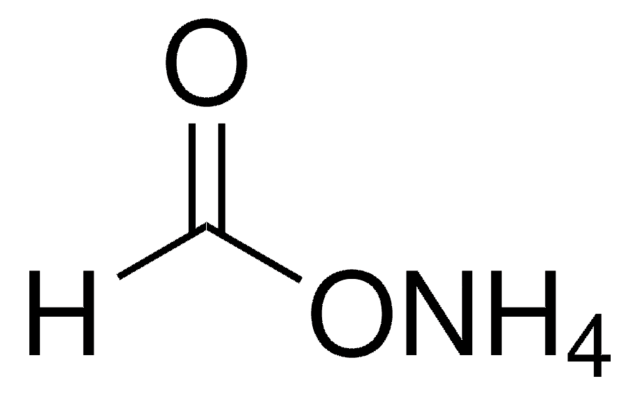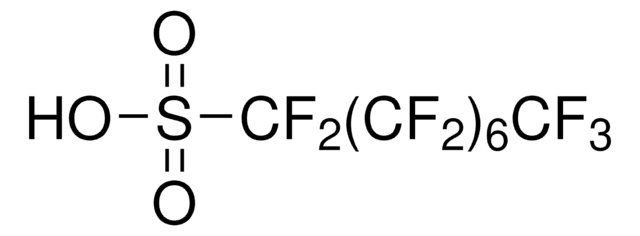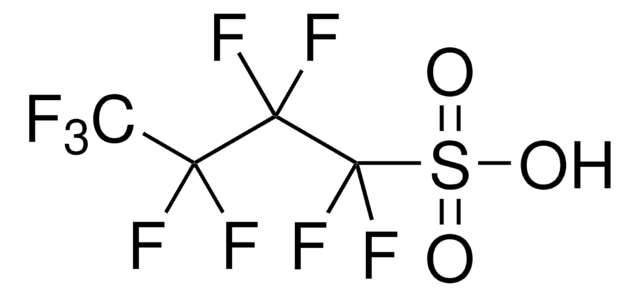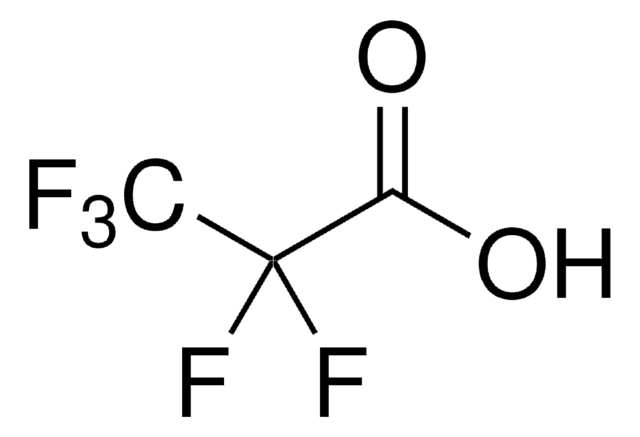49540
Heptafluorbuttersäure -Lösung
0.5 M in H2O, LiChropur™, suitable for ion pair chromatography
Synonym(e):
HFBA -Lösung, Perfluorbuttersäure -Lösung
About This Item
Empfohlene Produkte
Beschreibung
concentrate
Qualitätsniveau
Form
liquid
Qualität
LiChropur™
Konzentration
0.5 M in H2O
Methode(n)
ion pair chromatography: suitable
SMILES String
OC(=O)C(F)(F)C(F)(F)C(F)(F)F
InChI
1S/C4HF7O2/c5-2(6,1(12)13)3(7,8)4(9,10)11/h(H,12,13)
InChIKey
YPJUNDFVDDCYIH-UHFFFAOYSA-N
Verwandte Kategorien
Anwendung
Rechtliche Hinweise
Signalwort
Danger
H-Sätze
Gefahreneinstufungen
Skin Corr. 1A
Lagerklassenschlüssel
8A - Combustible corrosive hazardous materials
WGK
WGK 3
Flammpunkt (°F)
Not applicable
Flammpunkt (°C)
Not applicable
Persönliche Schutzausrüstung
Faceshields, Gloves, Goggles, type ABEK (EN14387) respirator filter
Hier finden Sie alle aktuellen Versionen:
Besitzen Sie dieses Produkt bereits?
In der Dokumentenbibliothek finden Sie die Dokumentation zu den Produkten, die Sie kürzlich erworben haben.
Kunden haben sich ebenfalls angesehen
Unser Team von Wissenschaftlern verfügt über Erfahrung in allen Forschungsbereichen einschließlich Life Science, Materialwissenschaften, chemischer Synthese, Chromatographie, Analytik und vielen mehr..
Setzen Sie sich mit dem technischen Dienst in Verbindung.












